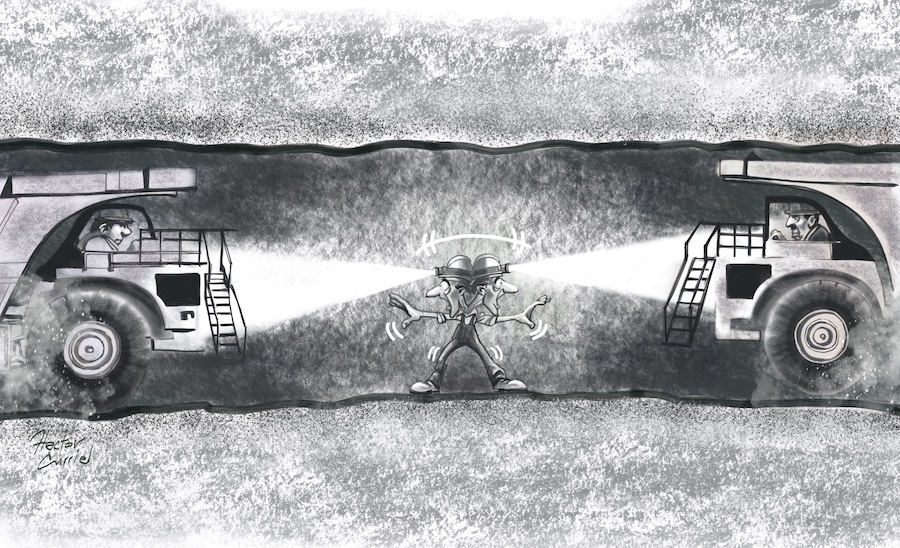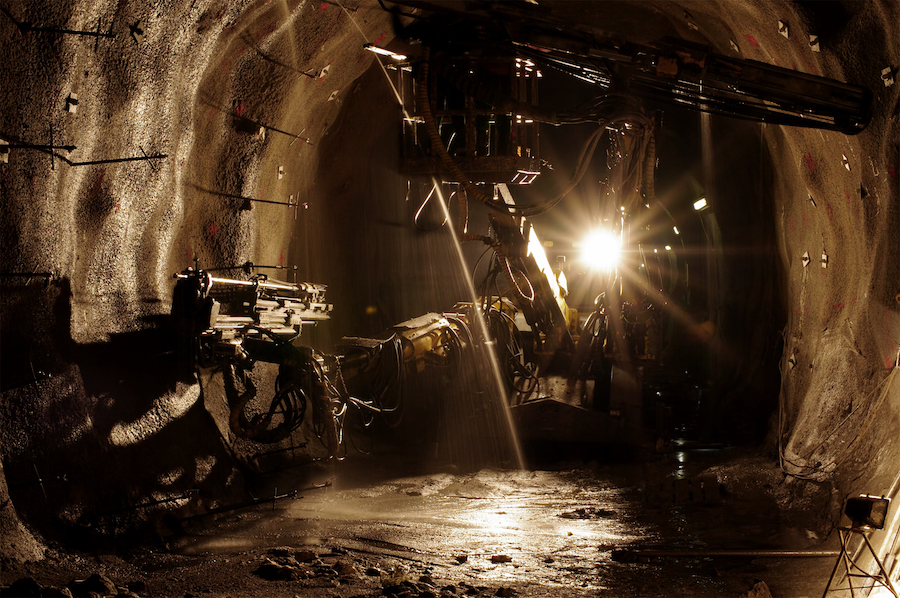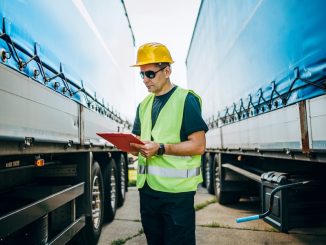
View the complete article here.
Collision is one of the biggest safety threats in mining: either between two pieces of machinery or between a worker and a vehicle. The power and size of the equipment mean that even a small error could result in tragic circumstances. New technology is helping to reduce the risk of mining fatalities, but collisions still pose a threat to the safety of workers on site.
Why Collision Avoidance?
It’s no surprise that mining can be a dangerous industry. Not only is heavy traffic moving through the job site, but workers are often hindered by blind spots and poor visibility. Excavation results in debris and dust that reduce visibility, and weather conditions can increase the challenges faced on the site.
When people are on the job site, it can be a challenge to maintain safety. The risk of accident and collision is always present. Unfortunately, a collision could cause serious injury or even death due to the impact of the large machinery.
Not only is it important to maintain the safety of workers, but collision avoidance also has a direct impact on operational costs. Mining companies can save money on medical costs related to injury, as well as protect the equipment to avoid the need for repair or replacement. Implementing the right mining safety strategies results in fewer near-misses, collisions, and other costly events.

Solutions to Reduce the Risk of Collision in Mining
A few details need to be considered in every mining operation to decrease the risk of collision:
- Visibility: Workers need a full line of sight to identify potential risks for a collision.
- Technology: Line of sight isn’t always available when workers are only looking with their eyes. Technology can be integrated into the system to expand visibility through automatic alerts and monitoring systems.
- Communication: Clear standards of communication need to be maintained from vehicle to vehicle (V2V), as well as a vehicle to infrastructure (V2I). Good communication between workers and central command creates awareness of positioning on the job site.
- Training: Thorough training needs to be provided to every worker at the beginning of the job, as well as continuing education focused on safety protocols and precautions.
History of Collision Safety in Mining
Years ago, the only technology available was to increase the possibility of survival if an accident occurred. For example, the use of seatbelts was standard, and eventually airbags were introduced along with crash resistance features.
Then, technology became available to start providing warnings before a collision happened. For example, backup warning systems provide an audible noise to warn those who might be in the way. Eventually, other warning systems were developed, such as proximity notifications, video systems, and more.
Tracking Technology in Mining
In our modern mining environment, a variety of tracking technology can be used to improve safety:
- Infrared Sensors: Using heat energy or to measure vehicle speed
- Ultrasonic Systems: Which triggers an alarm when an object is in the detection zone
- Magnetic: A transmitter that identifies changes in the magnetic field within the detection zone
- Radar: Detecting frequency shifts when something is in the detection zone
- RFID Tags: Tracked through a radio signal
- GPS: With a receiver that works through satellite signals to triangulate and transmit position
- Video Cameras: Mounted in the cab to provide visibility for blind spots
These tools have been developed to help avoid the risk of collision, as well as decrease the possibility of injury if a collision happens. For example, many mining machines can use tracking technology that monitors the positions of nearby pieces of equipment and workers in the area.
For the tracking to work effectively, tags are attached to machinery and worn by workers, sending positioning information to a central command center. A human operator can oversee the position of everything happening within the mine. Proximity tracking systems are often used for both surface and underground operations.
Another benefit of tracking tags is that they can be designed with alerts and alarms that trigger when two tags are in close proximity. This early warning gives workers and machine operators a chance to stop or adjust their trajectory, helping to prevent a collision from taking place.

Customizations for Mining Tracking Systems
Proximity technology can be customized based on the layout and size of the mining operation. Sometimes, “safe zones” are established, creating a safe location where people can move around without worrying about a collision.
Tracking systems need to be integrated into the equipment in a non-intrusive way. The worker needs access to see potentially compromising situations, without blocking view or distracting from other tasks that need to be completed simultaneously. So, every machine needs to be fitted with systems based on the unique needs of the equipment.
Customizations include alert systems that use GPS, electromagnetic sensors, or even satellite technology if a top-down view is needed of the job site.
The Future of Collision Avoidance
Only time will tell how technology will expand to help with collision avoidance and improved safety in the future. Current developments include possible features such as:
- Intelligent path prediction algorithms
- Speed management
- Intersection assistance
- Do not pass warnings
- Remote operational vehicles
- Autonomous vehicles
As these new technologies are developed, the hope is that common disadvantages will be overcome, such as false alarms or accuracy issues due to weather and environmental concerns. The industry goal is to maintain safety for all workers on site, while also protecting the financial interests of the company through collision avoidance. Integrating the right technology and tools can prove to be a valuable investment for mining operations above and below ground.
View the complete article here.
Why is collision avoidance crucial in the mining industry, and how does it impact both worker safety and operational costs?
Collision avoidance is vital in mining due to the risk of serious injury or death, and it directly influences worker safety while reducing medical costs and equipment-related expenses for mining companies.
What are the key solutions and technologies used to reduce the risk of collisions in mining, and how do they contribute to improved safety?
Solutions include enhancing visibility, integrating technology for automatic alerts, maintaining clear communication standards, providing comprehensive training, and employing tracking technologies like infrared sensors, RFID tags, and video cameras to monitor and prevent collisions.













































